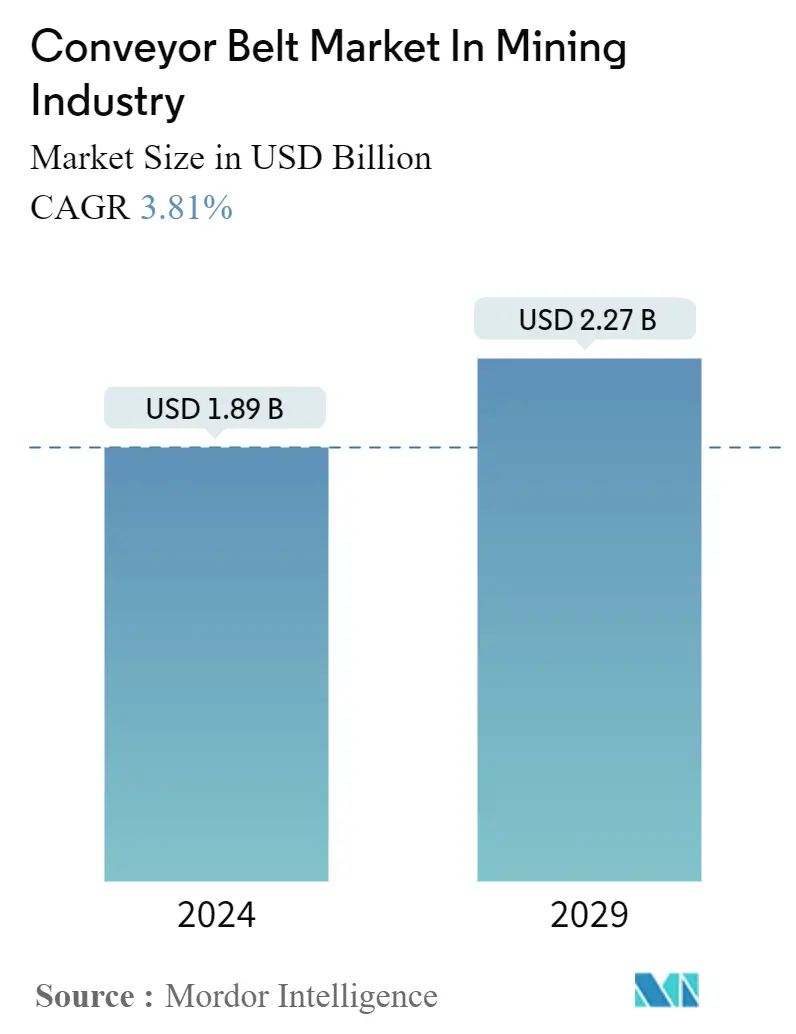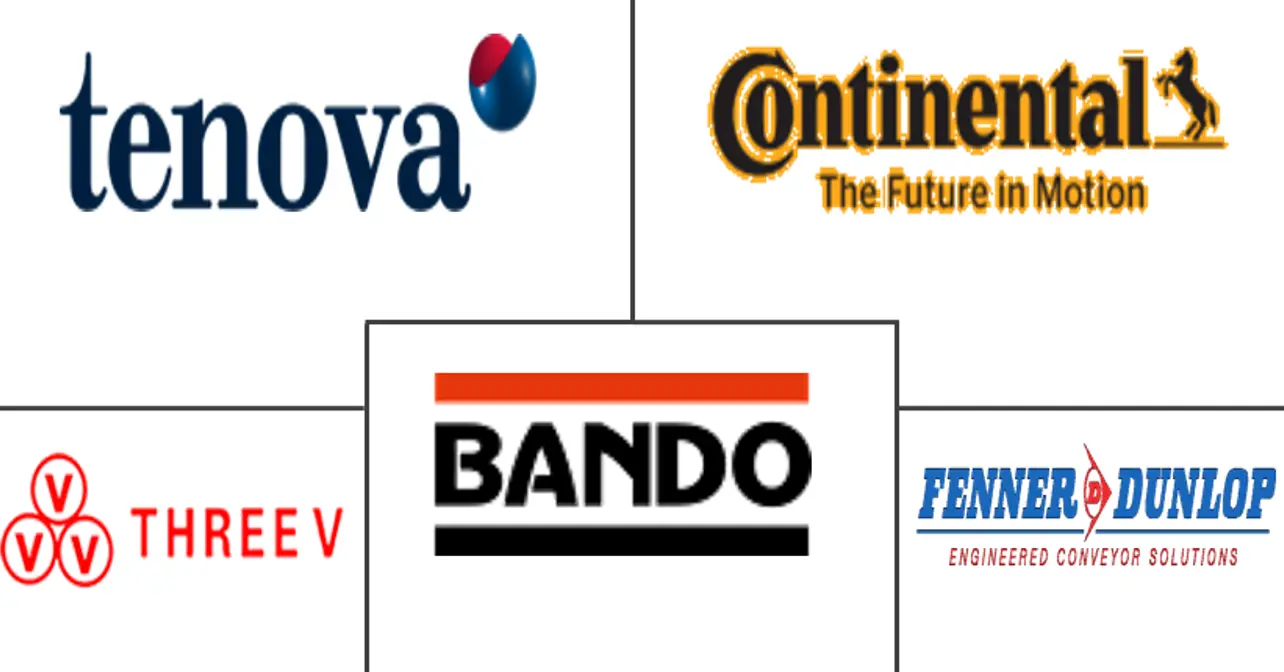Market Size of Conveyor Belt Industry In Mining Industry

| Study Period | 2019 - 2029 |
| Market Size (2024) | USD 1.89 Billion |
| Market Size (2029) | USD 2.27 Billion |
| CAGR (2024 - 2029) | 3.81 % |
| Fastest Growing Market | Asia Pacific |
| Largest Market | North America |
Major Players
*Disclaimer: Major Players sorted in no particular order |
Need a report that reflects how COVID-19 has impacted this market and its growth?
Mining Conveyor Belt Market Analysis
The Conveyor Belt Market In Mining Industry is expected to grow from USD 1.89 billion in 2024 to USD 2.27 billion by 2029, at a CAGR of 3.81% during the forecast period (2024-2029).
The mining industry heavily relies on conveyor belts to transport materials taken for processing. Hence, the industry is witnessing an increase in conveyor belt investments as it makes operations cleaner, safer, and more productive.
- For instance, In October 2021, Fenner Precision Polymers, a reinforced polymer technology company, announced the acquisition of Lumsden Corporation, a manufacturer of industrial conveyor belting and wire cloth for the quarry and mining industry and related solutions. The deal strengthens the position of Fenner Precision Polymers as a major supplier of highly specialized conveying solutions. It opens new opportunities like metal screening for infrastructure, mining, and road applications.
- Moreover, Chemprene LLC, a prominent maker of rubber-coated textiles in the United States, producing lightweight rubber conveyor belting, diaphragms, coated fabrics, and other precision molded products, plans to spend USD 14 million on its Beacon, New York, factory in 2021. Lightweight rubber conveyor belts, coated textiles, and molded diaphragms are also produced at the factory. The investment will enable the company to automate and increase production capacity at the 225,000-square-foot facility, resulting in increased efficiency.
- In the mining industry, drive technology significantly influences conveyor performance and system availability. Three-phase asynchronous motors plus gear units have proved a robust, quick-to-install, low-maintenance variant here. Players like Siemens have decades of experience in bulk material conveyor technology. High availability, proven technology, and low costs are the advantages of driving solutions for these applications.
- In mining industry practices, the required output and desired mining operator specify rotary speed as design parameters, determining the heat to be dissipated, which may strongly influence the dimensioning process. This has partly resulted in operating conditions that make a gear unit advisable larger than the output originally necessitates. If conveyor belts operate in climatic zones that are unusually warm or even inclined to extreme heat-cold fluctuations, a lot of attention must be paid to cool. For this reason, Siemens has developed correspondingly efficient cooling solutions for its three gear-unit series, comprising 46 conveyor belt drive sizes. So in many cases, a smaller gear unit may prove to be sufficient.
- The COVID-19 pandemic had significant impacts on the global economy across all industries, including mining. Like other industries, the mining industry is witnessing immediate challenges to stop the spread of the virus amongst the workers and ensure that the staff is safe and healthy.
